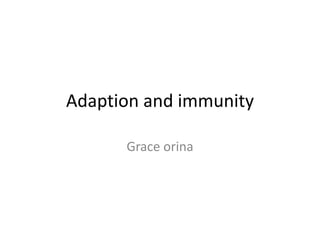Bacteria can be classified into three groups based on pathogenicity: primary pathogens that are known to cause disease when isolated from patients; opportunistic pathogens that cause disease in hosts with compromised defenses; and normal flora that rarely cause disease. Some bacteria previously considered non-pathogenic are now known to cause disease in compromised hosts due to their adaptability. Virulence factors like adherence factors, invasion factors, capsules, endotoxins, exotoxins, and siderophores help bacteria invade hosts, cause disease, and evade defenses. The immune system responds to bacterial infection through phagocytosis, antibodies, and the complement system, while bacteria have developed mechanisms like antigenic variation and inhibition of immune responses to ev















